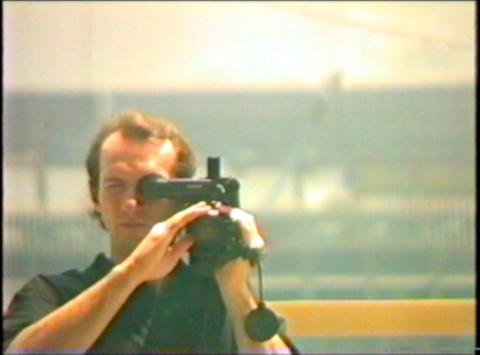Some documentary filmmakers are born lucky. Maria Stoianova seems like one of them.
Her lovely, yet bracing, cine-memoir is almost exclusively composed of archive footage shot by her Ukrainian father Misha, an ice ballet dancer, between 1986 and 1994, capturing the intimacies, uncertainties and transformations of an emerging nation dancing under the shadow of a crumbling empire.
Filled with a wealth of material, from the political to the personal, from kitsch performances to tender moments, Fragments Of Ice (2024) expertly builds upon a vast video treasure trove to create a particularly Ukrainian rhapsody of ordinary life at the so-called end of history.
Her father, often accompanied by her mother, who worked as an assistant director, was one of the privileged few members of the Soviet Union who, as part of the propagandist dance troupe, was allowed to see the Western world, travelling to Canada, Australia, Finland, Greece — even the United Arab Emirates. Spending an exorbitant amount of money on a primitive video camera, he captures the vastly different world of capitalism — their clothes, skyscrapers, amusement parks and malls. As for the travels in the former USSR, her parents share no specific memories. They didn’t even bother to bring the camera along with them.
Born almost the same time as her father bought the camera (perhaps solidifying her career as a documentary filmmaker in ice right from the beginning), we see her come-of-age in a Soviet nation as it makes its difficult, never-ending change to a capitalist economy.
“Official texts ignore real life, while life tries to overlook official texts,” Stoianova tells us, deliberately contrasting the propagandistic dictates of the Ukrainian Ballet on Ice troupe (recited in robotic Russian) with her own memories, narrated in warm Ukrainian. Dance feels like a particularly useful metaphor here, given that when the Soviet Union was under threat from the inside, the TV stations had no idea what to do and played Swan Lake on a loop.
But she doesn’t merely turn the archive tap on, but uses bracing formalist gambits to truly elevate the material — the modern Melbourne metro cut against tanks rolling into Moscow during the 1991 coup attempt; a memory of bears on ice (a truly barbaric practice) juxtaposed with a killer whale show in Hong Kong; and shifting aspect ratios, still photos and use of freeze frames, immersing us into the story and making it sing as opposed to dryly reciting events, times and places. Even without the fascinating historical context, this would be a fine aesthetic work all on its own.
Still, we see again and again how Ukrainian identity— its specific folklore, dances, costumes — is subsumed under the terrifying unifying lie of “Russianness,” with the Soviet Union and Russia paradoxically touted as one and the same. And even as Ukraine emerges as an independent nation, and Misha finds work in Blackpool pier (alongside Torvill and Dean!) and Europa-Park, he is still presented as a Russian dancer!
These questions of cultural colonialism rear their ugly head at the end, as Stoianova refutes Fuyukama’s end-of-history schtick and references the ongoing Russian aggression today. This footage might seem like a dispatch from a different world. But it’s not. Swan Lake plays on a loop forever.
Redmond is the editor-in-chief of Journey Into Cinema.
